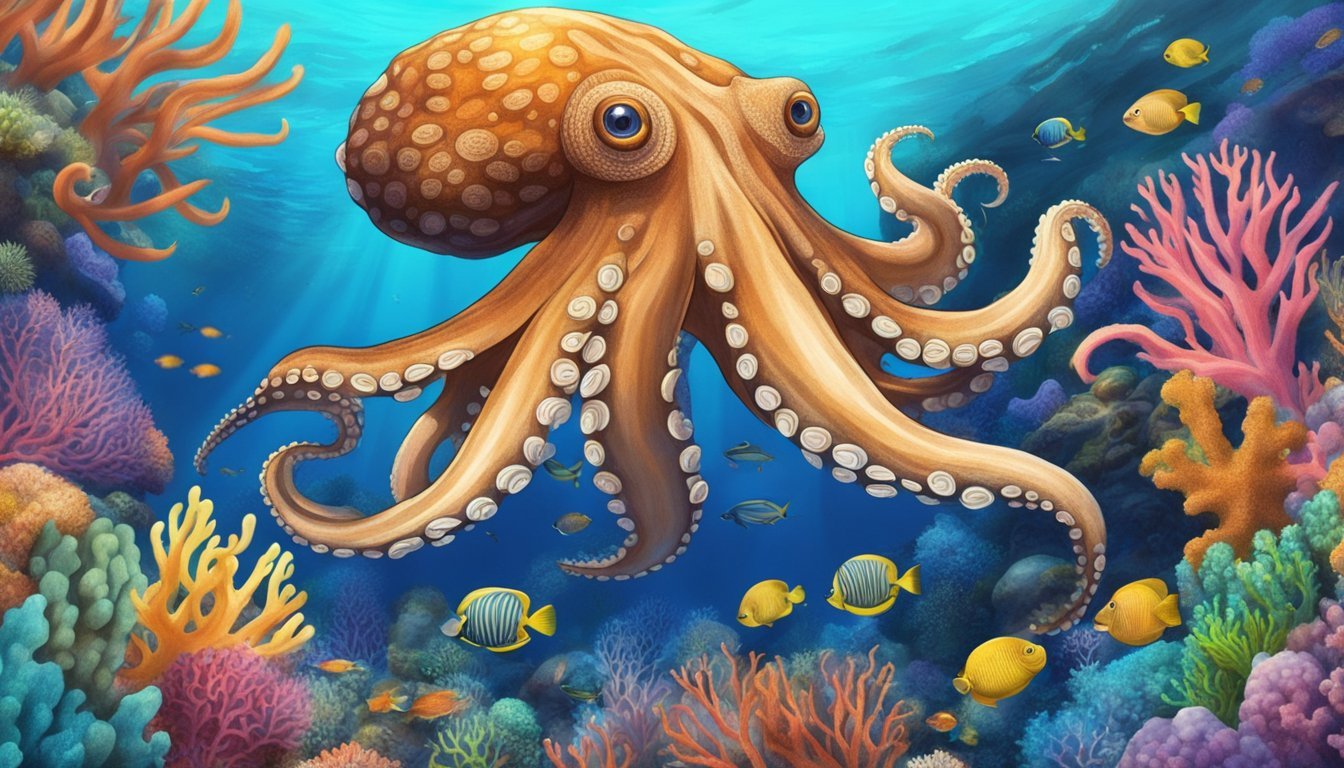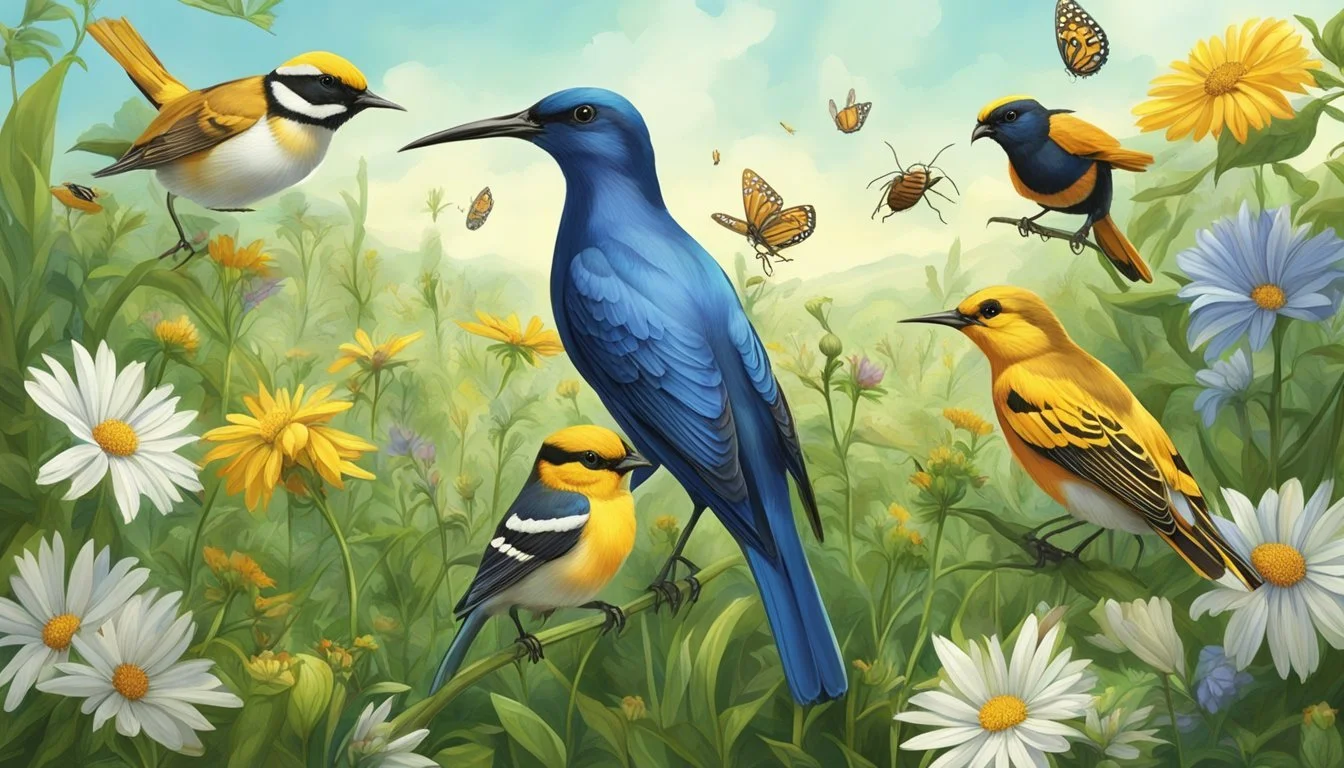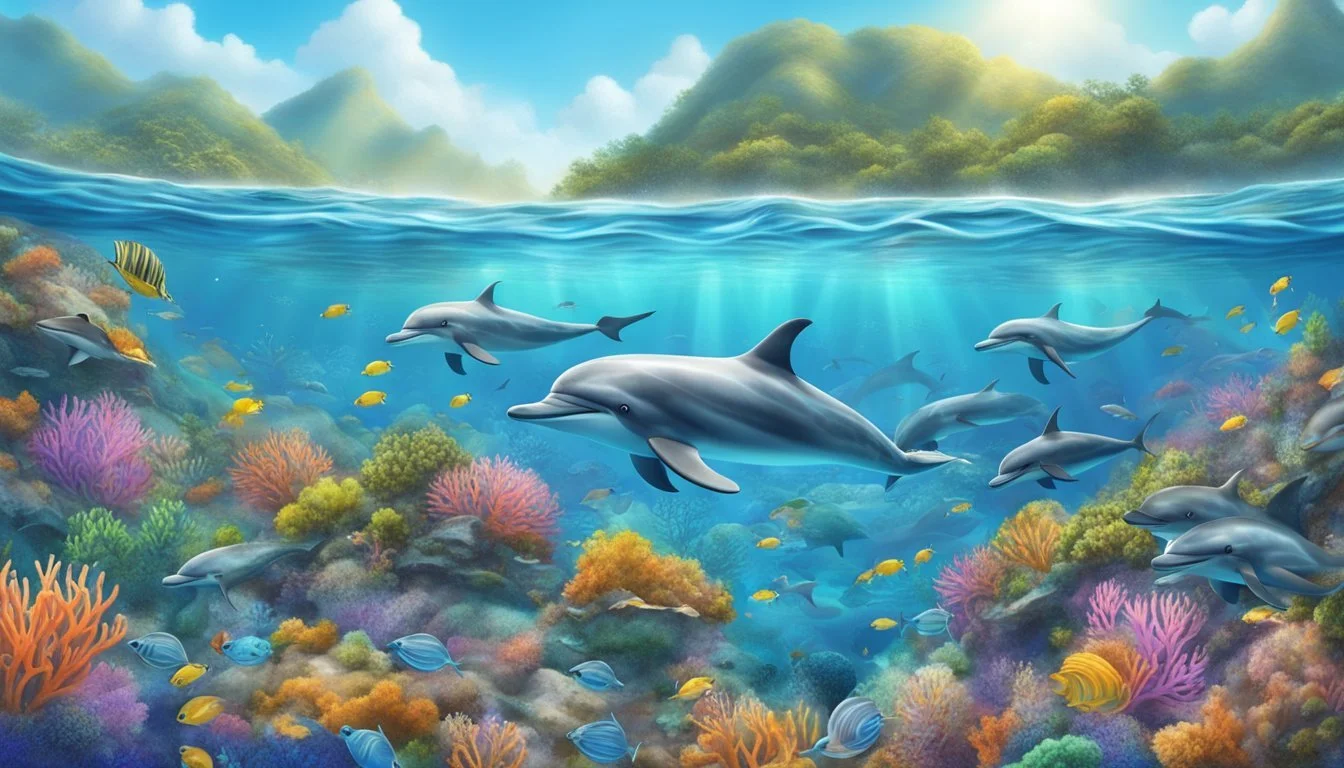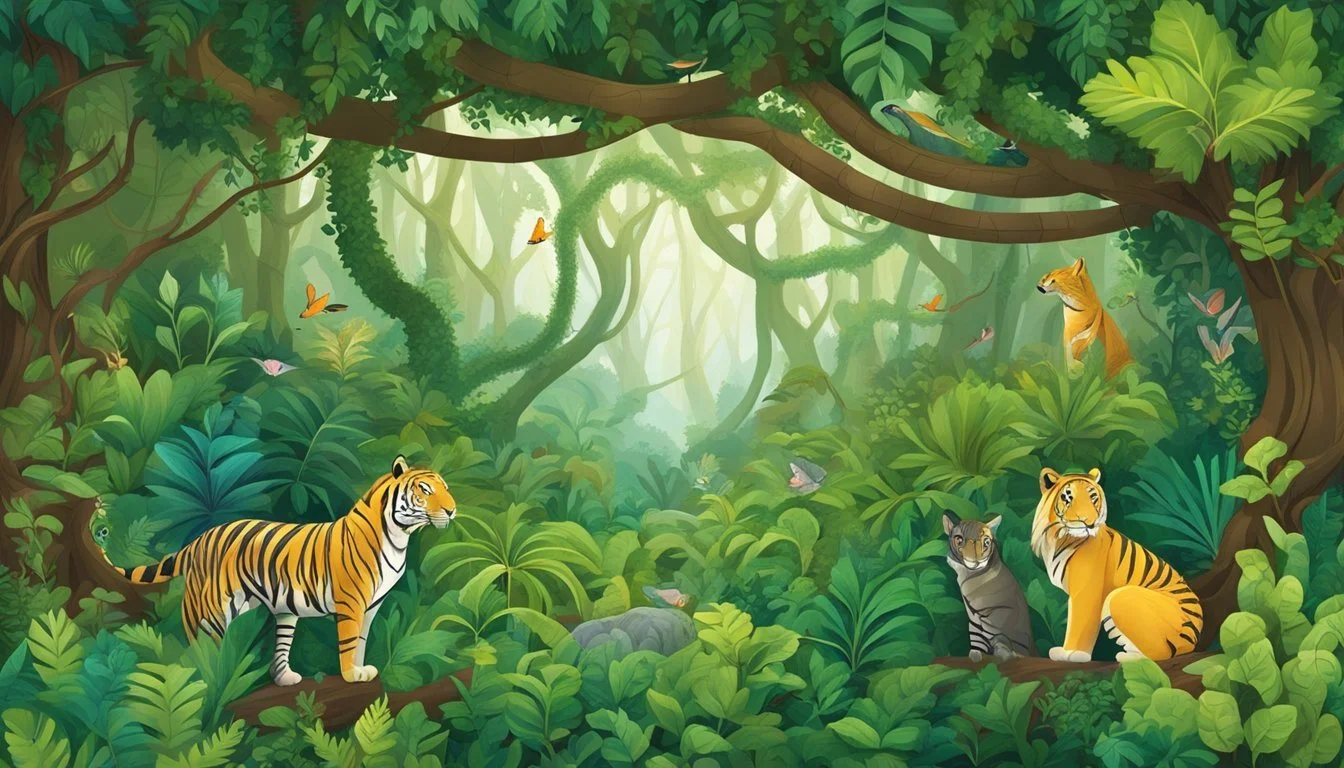10 Documentaries About the Strangest Symbiotic Relationships in Nature
Exploring Nature's Unexpected Alliances
Nature is full of surprising partnerships between different species. From tiny insects to large mammals, organisms have developed fascinating symbiotic relationships that allow them to thrive in diverse environments. These alliances can involve cooperation, protection, or even exploitation, showcasing the intricate web of life on our planet.
Documentaries offer a captivating window into these remarkable natural phenomena, revealing the hidden world of symbiosis in vivid detail. Through expert cinematography and insightful narration, viewers can witness firsthand how various creatures rely on each other for survival and mutual benefit. These films highlight some of the most unusual and intriguing examples of symbiotic relationships found in ecosystems around the globe.
1) 'Fantastic Fungi' by Louie Schwartzberg
'Fantastic Fungi' explores the hidden world of mycelia and their crucial role in Earth's ecosystems. Directed by Louie Schwartzberg, this documentary showcases the beauty and complexity of fungi through stunning time-lapse photography.
The film highlights the symbiotic relationships between fungi and various organisms. It reveals how mycorrhizal networks connect trees and plants, facilitating communication and resource sharing within forests.
Experts like Paul Stamets and Andrew Weil discuss the potential of fungi in medicine, environmental restoration, and sustainable technologies. The documentary examines how mushrooms can break down pollutants and potentially offer solutions to global challenges.
'Fantastic Fungi' emphasizes the interconnectedness of all living things and the vital part fungi play in maintaining ecological balance. It presents a compelling case for the importance of preserving and studying these often-overlooked organisms.
https://www.imdb.com/title/tt8258074/
2) 'My Octopus Teacher' by Pippa Ehrlich and James Reed
'My Octopus Teacher' is a captivating 2020 documentary that explores an extraordinary relationship between a human and an octopus. Directed by Pippa Ehrlich and James Reed, the film follows filmmaker Craig Foster's year-long journey in a South African kelp forest.
Foster's daily dives lead to a unique bond with a wild common octopus. The film showcases the intelligence and adaptability of this fascinating creature as it navigates its underwater world.
The documentary's stunning cinematography captures the beauty of the kelp forest ecosystem. Viewers witness intimate moments between Foster and the octopus, revealing unexpected behaviors and survival strategies.
'My Octopus Teacher' received critical acclaim and won the Academy Award for Best Documentary Feature in 2021. The film's success has brought attention to marine conservation and the importance of connecting with nature.
Through Foster's narrative, the documentary offers insights into both octopus behavior and human reflection. It demonstrates how interspecies relationships can profoundly impact our understanding of the natural world.
https://en.wikipedia.org/wiki/My_Octopus_Teacher
3) 'Symbiotic Earth' by John Feldman
'Symbiotic Earth' is a documentary that explores the life and work of Lynn Margulis, a pioneering scientist who challenged conventional scientific thinking. The film showcases Margulis's groundbreaking ideas about symbiosis and its role in evolution.
Directed by John Feldman, the documentary presents Margulis as a scientific rebel who faced criticism for her theories. It highlights her persistence in promoting the concept that symbiosis is a key driver of evolution.
The film delves into Margulis's vision of life evolving through collaboration rather than competition. It examines how her ideas initially faced ridicule but eventually gained acceptance in the scientific community.
'Symbiotic Earth' features interviews and archival footage to illustrate Margulis's impact on biology. The documentary also explores how her work continues to influence our understanding of evolution and Earth's ecosystems.
The film serves as both a biographical portrait and an exploration of scientific paradigm shifts. It demonstrates how Margulis's research has fundamentally changed perspectives on evolution and the interconnectedness of life on Earth.
Learn more about 'Symbiotic Earth' on IMDb
4) 'The Magic of Mushrooms' by Marijn Poels
'The Magic of Mushrooms' explores the fascinating world of fungi and their symbiotic relationships with plants and trees. Filmmaker Marijn Poels takes viewers on a journey through forests and fields to uncover the hidden networks beneath our feet.
The documentary showcases the intricate connections between mushrooms and tree roots, forming vast underground networks known as mycorrhizal associations. These partnerships allow trees to share nutrients and information, creating a complex ecosystem.
Poels interviews experts who explain how fungi act as nature's recyclers, breaking down dead organic matter and returning nutrients to the soil. The film also highlights the role of mushrooms in supporting plant growth and enhancing soil health.
Viewers learn about the diverse shapes, sizes, and colors of mushrooms, from tiny spores to massive fruiting bodies. The documentary captures stunning time-lapse footage of mushrooms emerging from the forest floor.
'The Magic of Mushrooms' reveals the crucial role fungi play in maintaining healthy ecosystems and their potential for solving environmental challenges.
[https://www.imdb.com/title/tt13651628/]
5) 'Nature: The Gathering Swarms' by Nic Stacey
'Nature: The Gathering Swarms' explores the fascinating phenomenon of animal swarms. This documentary showcases various species that congregate in massive numbers, creating awe-inspiring spectacles.
The film features bats, bees, and locusts among other creatures. It examines how these animals come together in groups numbering in the millions, billions, or even trillions.
High-speed cameras capture the mesmerizing movements of these swarms. The footage reveals how individual organisms become part of a larger, collective intelligence.
'The Gathering Swarms' demonstrates how these mass gatherings serve important ecological functions. It highlights the complex behaviors and communication methods that enable such large-scale coordination.
Nic Stacey's documentary offers viewers a unique glimpse into one of nature's most impressive displays. It showcases the power of collective action in the animal kingdom.
https://www.pbs.org/wnet/nature/gathering-swarms/8990/
6) 'Rivers and Tides' by Thomas Riedelsheimer
'Rivers and Tides' is a documentary that explores the unique relationship between artist Andy Goldsworthy and nature. Released in 2001, the film showcases Goldsworthy's ephemeral sculptures created from natural materials.
Goldsworthy uses elements like ice, driftwood, leaves, and stone to craft intricate art pieces in various outdoor settings. His work demonstrates a symbiotic connection with the environment, as he shapes nature while allowing it to shape his creations.
The documentary captures Goldsworthy's process as he builds delicate structures that are often swept away by tides or melted by the sun. This transient quality of his art reflects the ever-changing nature of the world around us.
Riedelsheimer's film beautifully illustrates how Goldsworthy's art exists in harmony with its surroundings, emphasizing the temporary nature of both human creations and natural phenomena. The artist's work serves as a visual metaphor for the delicate balance between human intervention and natural processes.
[https://en.wikipedia.org/wiki/Rivers_and_Tides]
7) 'Winged Migration' by Jacques Cluzaud
'Winged Migration' is a breathtaking documentary that showcases the extraordinary journeys of migratory birds. Directed by Jacques Cluzaud, Jacques Perrin, and Michel Debats, the film offers viewers a bird's-eye view of these incredible voyages.
The documentary was filmed over three years across all seven continents. It captures the awe-inspiring flight patterns and navigation skills of various bird species during their seasonal migrations.
'Winged Migration' employs innovative filming techniques to achieve its stunning aerial shots. The filmmakers used a variety of aircraft and creative methods to fly alongside the birds, providing unprecedented close-up footage.
The film eschews traditional narration, instead relying on striking visuals and an emotive musical score to convey its message. This approach allows viewers to immerse themselves in the birds' world and experience their journey firsthand.
'Winged Migration' received critical acclaim upon its release in 2001. It was nominated for an Academy Award for Best Documentary Feature, cementing its place as a landmark nature film.
https://en.wikipedia.org/wiki/Winged_Migration
8) 'The Cove' by Louie Psihoyos
'The Cove' is a 2009 documentary that exposes the controversial dolphin hunting practices in Taiji, Japan. Directed by Louie Psihoyos, the film follows a team of activists and filmmakers on a covert mission to uncover the truth behind these hidden activities.
The documentary sheds light on the complex relationship between humans and dolphins in this coastal town. It reveals how some dolphins are captured for entertainment purposes, while others are killed for their meat.
Psihoyos and his team use advanced technology and daring tactics to film the secretive dolphin hunts. Their efforts result in shocking footage that sparked international outrage upon the film's release.
'The Cove' won the Academy Award for Best Documentary Feature in 2010. It raised global awareness about dolphin conservation and the ethics of marine mammal captivity.
The film's impact extends beyond its initial release, continuing to influence discussions about human-animal relationships and marine conservation efforts worldwide.
9) 'The Hidden Kingdoms of China' by Lyn Hughes
'The Hidden Kingdoms of China' offers viewers a captivating glimpse into the diverse ecosystems of China. This documentary explores five distinct natural realms across the country, showcasing their unique wildlife and landscapes.
The film takes audiences on a journey through high mountains, tropical jungles, bamboo forests, great plains, and temperate forests. Each environment reveals its own cast of charismatic animal inhabitants and their fascinating adaptations.
One storyline follows a golden monkey during its first year of life, illustrating the challenges of survival in a forest habitat. The documentary highlights the lesser-known wild side of China, featuring creatures and landscapes that many viewers may be unfamiliar with.
'The Hidden Kingdoms of China' provides exclusive access to various locations, allowing for intimate portrayals of animal behavior and stunning visuals of China's natural wonders. It presents a fresh perspective on the country's biodiversity and ecological importance.
https://www.imdb.com/title/tt11647966/
10) 'Voyage of Time' by Terrence Malick
'Voyage of Time' is a unique documentary that explores the grandeur of the universe and life on Earth. Directed by Terrence Malick, this experimental film takes viewers on a journey through 13.8 billion years of cosmic history.
The documentary exists in two versions: a 40-minute IMAX experience narrated by Brad Pitt and a 90-minute feature-length version narrated by Cate Blanchett. Both versions showcase stunning visuals that blend scientific accuracy with artistic beauty.
Malick's film presents the intricate symbiosis between the universe and life itself. It illustrates how cosmic events and natural processes have shaped the world we inhabit today.
'Voyage of Time' stands out for its poetic approach to science. The film uses breathtaking imagery to depict everything from the birth of stars to the evolution of life on Earth.
This documentary serves as a visual meditation on the interconnectedness of all things in the cosmos. It invites viewers to contemplate their place in the vast expanse of time and space.
https://en.wikipedia.org/wiki/Voyage_of_Time
Understanding Symbiotic Relationships
Symbiotic relationships form the foundation of many ecosystems. These intricate connections between different species shape nature's delicate balance and drive ecological processes.
Definition and Types of Symbiosis
Symbiosis refers to close, long-term interactions between two or more different species. These relationships can be categorized based on the effects they have on the organisms involved.
There are three main types of symbiosis:
Mutualism: Both species benefit
Commensalism: One species benefits while the other is unaffected
Parasitism: One species benefits at the expense of the other
Symbiotic relationships can be obligate, where the species depend on each other for survival, or facultative, where the relationship is beneficial but not essential.
Mutualism, Commensalism, and Parasitism
Mutualism involves two species that both gain advantages from their relationship. A classic example is the partnership between clownfish and sea anemones. The clownfish receives protection from predators, while the anemone benefits from the fish's waste products and defense against certain predators.
Commensalism occurs when one species benefits without affecting the other. Remora fish attaching to sharks exemplify this relationship. The remora gains transportation and food scraps without impacting the shark.
Parasitism involves one organism (the parasite) benefiting at the expense of another (the host). Ticks feeding on mammals demonstrate this type of symbiosis. The tick gains nourishment, while the host suffers potential health issues.
These relationships showcase nature's complexity and interconnectedness. They highlight how species adapt and evolve together, creating intricate webs of interaction that support biodiversity and ecosystem stability.
Fascinating Examples of Symbiosis
Nature abounds with remarkable partnerships between different species. These symbiotic relationships demonstrate the intricate interconnectedness of ecosystems and the diverse ways organisms cooperate for mutual benefit.
Coral and Zooxanthellae
Coral reefs rely on a crucial symbiotic relationship with tiny algae called zooxanthellae. These microscopic organisms live within coral tissues, providing up to 90% of the coral's energy needs through photosynthesis. In return, corals offer zooxanthellae a protected environment and compounds needed for photosynthesis.
This partnership allows corals to thrive in nutrient-poor tropical waters. The algae also give corals their vibrant colors. During stressful conditions like elevated water temperatures, corals may expel their zooxanthellae, leading to coral bleaching.
Mycorrhizal Networks and Plants
Mycorrhizal networks form an underground web of fungal connections between plants. These networks facilitate nutrient and water exchange, benefiting both the fungi and their plant partners. Fungi extend their hyphae into plant roots, increasing the surface area for nutrient absorption.
Plants provide fungi with carbohydrates produced through photosynthesis. This relationship enhances plant growth, improves drought resistance, and boosts seedling survival rates. Some plants, like orchids, rely entirely on mycorrhizal fungi for germination and early growth.
Mycorrhizal networks also enable communication between plants, allowing them to share resources and warning signals about pests or environmental stresses.
The Impact of Symbiosis on Ecosystems
Symbiotic relationships play a crucial role in shaping ecosystems. These intricate partnerships between different species contribute to biodiversity and ecological balance while facing various threats in today's changing world.
Biodiversity and Ecological Balance
Symbiosis fosters biodiversity by creating niches for specialized species. The relationship between coral reefs and zooxanthellae algae illustrates this concept. Corals provide a protective environment for algae, while algae supply essential nutrients to corals through photosynthesis.
This symbiosis enables the growth of diverse coral reef ecosystems, supporting countless marine species. Similarly, mycorrhizal fungi form symbiotic associations with plant roots, enhancing nutrient uptake and water absorption. This partnership allows plants to thrive in challenging environments, promoting plant diversity and ecosystem stability.
Symbiotic relationships also maintain ecological balance through pest control and pollination. For example, ants protect acacia trees from herbivores in exchange for shelter and food. This mutualism helps regulate herbivore populations and preserves plant biodiversity in certain ecosystems.
Threats to Symbiotic Relationships
Climate change poses a significant threat to symbiotic partnerships. Rising ocean temperatures can lead to coral bleaching, disrupting the delicate balance between corals and their algal symbionts. This disruption can have cascading effects on entire reef ecosystems.
Habitat destruction and fragmentation also jeopardize symbiotic relationships. Deforestation, for instance, can sever connections between plants and their mycorrhizal fungi partners, impacting nutrient cycling and plant growth.
Pollution and pesticide use threaten pollinator-plant symbioses. Declining bee populations due to pesticide exposure can reduce pollination rates, affecting plant reproduction and ecosystem stability. Invasive species can also disrupt established symbiotic relationships by outcompeting native species or introducing new pathogens.








